- Home >
- Blog >
- amarone-wines-tips >
- How is Amarone produced? Alfavin.ch explains it all!
Amarone, the star of the Veneto region.
With a reputation that today exceeds the borders (of Italy, of course), Amarone has acquired an international status since its wines are found in the four corners of the world and on the best tables of the planet. And yet, it is not the oldest of the wines produced in
the Veneto region. Unlike Recioto, which is a sweet wine, Amarone is a dry red wine with a little residual sugar. The fame of this style of wine is due not only to the opening of international markets but also to the evolution of tastes. In fact, if in the past people preferred rich, smooth and dense wines in the mouth, nowadays they prefer drier, less rich wines.
How is Amarone produced?
Produced mainly from Corvina, Corvinone (45-95%) and Rondinella (5-30%) grapes,
Amarone undergoes a special stage of vinification. Have you ever heard of the elaboration of straw wine? Well, for Amarone it's the same thing. When the time comes to harvest the grapes, that is to say when the winemaker considers that the grapes have reached the right maturity, they are harvested and put to dry in cool and airy places to concentrate in sugar and aromas. We explain why. When we apply this drying method, we speak of concentration by desiccation, i.e. concentration in sugar by loss of water. This allows the wine to gain in richness both on the potential alcohol and aromatic richness. If today, the grapes are dried in crates or on racks (small pieces of wood hung on the wall) they were, in the past, placed on a bed of straw. It should be noted that no dried grapes can be vinified before December 1st following the harvest. Once this crucial step is completed, the grapes are then put into fermentation to transform the sugar into alcohol. This so-called alcoholic fermentation usually lasts between two and three weeks and is done in vats. It ends when all the sugar, or almost all, is transformed into alcohol. Then the wines are transferred to barrels or casks. Before starting their ageing phase, the winemakers decide whether or not to carry out a second fermentation called malolactic fermentation. This is to transform the malic acids into lactic acids or to be clearer, to decrease the acidity of the wines. The wines are then aged for a minimum of two years for the Amarone Classico and four years for the Riserva vintages.
How to serve Amarone
Tasting an Amarone requires patience. With a production method that brings more aromatic complexity and power to the wine, it is necessary to give these wines time to open up and develop their full potential. Two essential notions in the tasting of Amarone are to be taken into account and above all
not to be neglected: the temperature of service and the opening beforehand. With an alcohol content generally between 15 and 16%,
Amarone della Valpolicella needs to be opened a few hours before serving (between two and three hours) in order to open up. When we say open, we mean that the wine reveals its aromas, that its structure in the mouth is pleasant to the palate, that the tasting as a whole is pleasant. The temperature is of primary importance. As with any other wine, the serving temperature plays a very important role and is a function of the wine's alcohol content, its structure and its balance (alcohol, acidity and tannins for red wines). For example, in the case of a light red wine, the temperature will be between 14 and 16°. In the case of an Amarone wine, the ideal temperature is between 16 and 18°. Served too cool, the wine is closed and you can't feel the aromas, the wine in the mouth is dry and tannic; served too hot, the alcohol will take over.
What to serve with Amarone?
Generally considered a wine to be drunk in autumn and until spring, as summer temperatures are not conducive to its tasting, the food and wine pairings with wines from Valpolicella are multiple. As explained above, the composition of the wine and its aromatic complexity require dishes capable of supporting the wine and not giving way to it. A venison stew with a creamy sauce, accompanied by candied prunes is an interesting match. The chewiness of the meat resonates with the tannic structure of the Amarone. A reduced red wine sauce that brings aromatic complexity and smoothness brings the wine to develop many aromas, a suave side in the mouth. A classic pairing, but one that always works, is the association of Amarone and blue-veined cheese. Indeed, the so-called "blue" cheeses and their characteristic taste of mold, appreciate this type of wine whose velvety texture and sweet notes counterbalance the assertive character of the cheese. Our favorite, an Amarone della Valpolicella "Ca'Coato" from the Antolini estate. On the nose, aromas of chocolate, black cherries and prunes; on the palate, a wine with an assertive, elegant and velvety structure. A wine to be appreciated with hunting dishes. Potential of keeping between 15 and 20 years.
Find all our other articles on Amarone:What are the best Amarone wines? Alfavin.ch explains it all!Food and wine pairing advice for the Amarone, Alfavin.ch tells you everything!Our tips for aging Amarone winesOur wines linked to this post
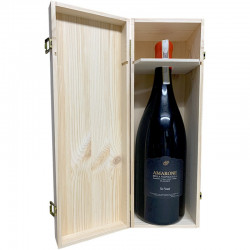
115.00 CHF
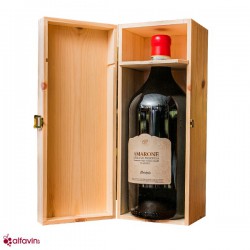
349.00 CHF
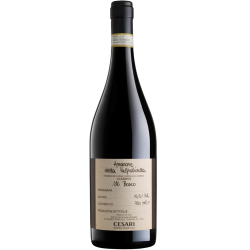
58.00 CHF
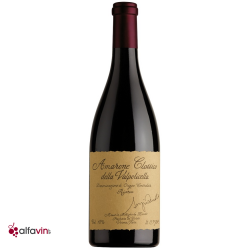
109.00 CHF
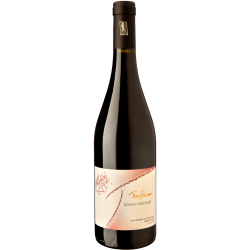
22.00 CHF

15.00 CHF












